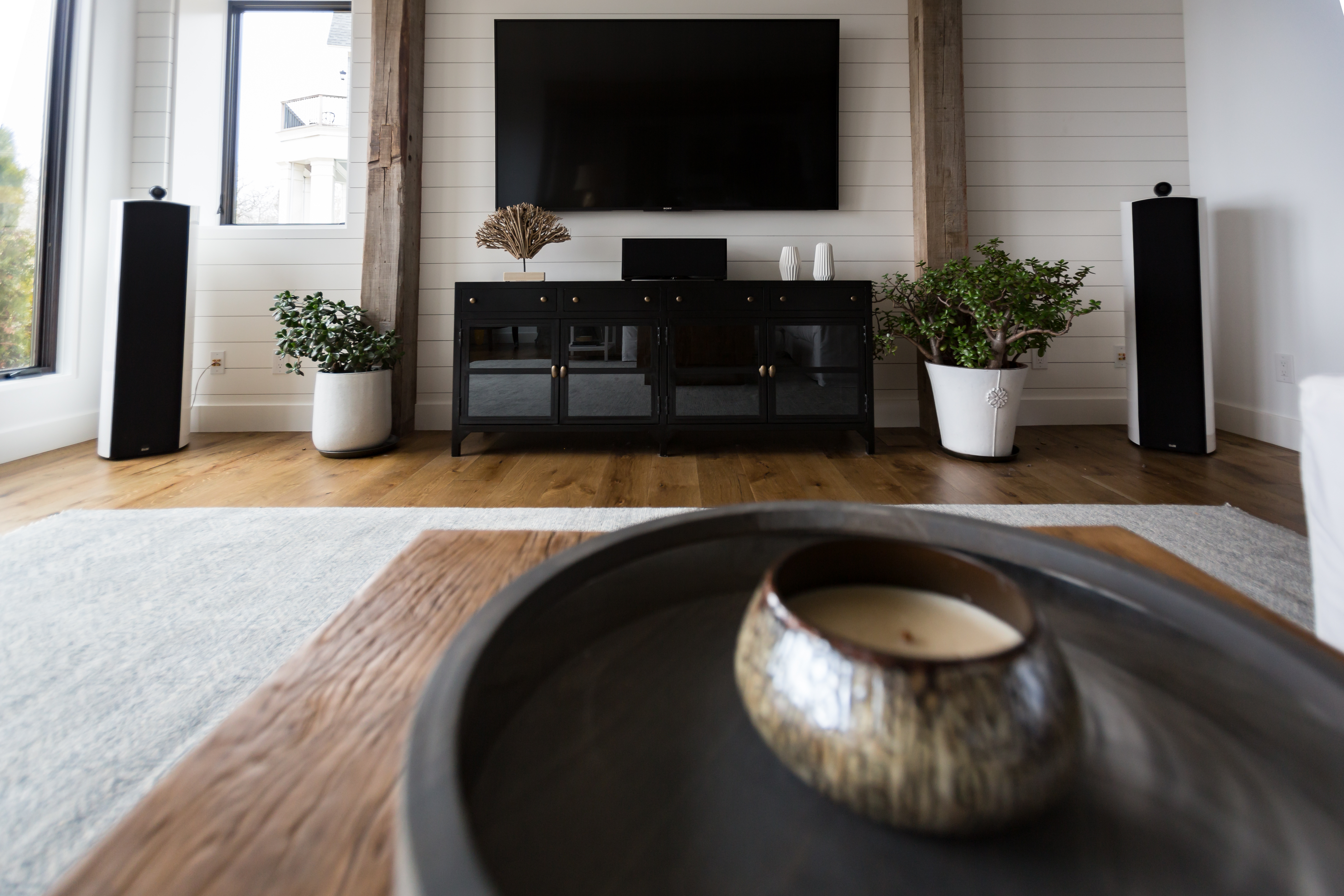
A sound TV decision
When we discuss the lockdown, one of the things we all end talking about is what watched on TV? Depending on when you spoke, it went from Tiger King to Hollywood to Filthy Money (with a little Unorthodox thrown in for those who can take subtitles). The interesting thing about those conversations is this: While we all were amazed by the image quality of our TV, many said they couldn't always hear the dialog.
The two biggest complaints are that the actors didn't seem to be speaking clearly or that all the music and effects drown out their words. Why, people ask, doesn't someone fix this before the program is broadcast? Surely with all the money they spend, they could take the time to make sure we understand what people are saying. While some of this may be to our advancing age, don't blame yourself too much.
There are several other reasons and most of them may be your TV’s fault. In this blog we are going to look at some of things you can do to get the words as clear as the pictures.
Your TV
Having bought the latest 4K TV, you may not want to hear that the speakers are not very good. When we squeeze millions of pixels into something barely thicker than a pen, the sound gets compromised. The same thinness that drove you to buy the TV also delivers lackluster sound. Small speakers don’t produce good sound. There are other reasons.
First, where those tiny speakers are placed does not help either. The small speakers are often placed behind or underneath the screen to avoid spoiling the look of the TV. Anywhere except pointing at you. Secondly, the design of the room or its acoustics in your place might highlight or muffle some frequencies more than others. In both these cases, what gets lost in the dialog.
To make this more complicated, the way that some shows are broadcast can make them worse. To get us excited, some shows are now mixed and transmitted in ‘5.1’ or ‘surround sound’. It’s called 5.1 because it designed to work with 5 speakers and sub-woofer or sub (the ‘.1’). The problem is your TV may only have two speakers, so the TV must ‘downmix’ the sound to simple stereo. Depending on how your TV does this, the result can be very messy. In sound terms, we would call this ‘cluttered’ or ‘unbalanced’ sound, but basically, bits might be completely missing.
There are typically two ways to fix this: a soundbar or a full home theater.
A Soundbar
The fastest resolution to this problem is a soundbar. These come in all shapes, sizes, prices and can sit on the same table as your TV or even be mounted on the wall underneath it. Basically, you need to consider three things: how big a system you want, what features must it have and how great do you want it to sound? The combination of these three will probably define how much you are going to have to pay and what your choices are.
- Budget Systems – budget systems will probably cost you between $400 and $1000. If you spend less than $400, make sure you are getting something that’s better than your TV. Budget systems tend to support 2.1 (stereo and sub) or 3.1 (stereo, center and sub) sound. Budget systems do tend to support Bluetooth and will allow you to connect your phone or mobile device to them. You can get systems without a standalone sub, but the sound with one is much better. Many bars also support Google Assistant or Amazon Alexa.
- Premium Soundbars – these systems typically cost between $1000 and $1500. Sometimes these are available as a single bar but mostly they come with a standalone sub. These soundbars tend to be bigger because they have more speakers in them. This allows them to offer a simulated surround or 5.1 sound but without speakers behind you. As well as having all the same features as budget systems, they also support more advanced sound features like Dolby Atmos.
- Home Theater Soundbars - the high end of the market, costing over $1,500 are entry-level home theaters. A good example would be the Sonos combination of an Arc Soundbar, their Sub and two One SL speakers for surround sound. These solutions bring you all the features of cheaper systems, including Dolby Atmos, but with better quality speakers and amplification.
All these solutions offer benefits for people looking for better sound. They also work better than installed in an existing room where you don’t want to either change the room or have lots of wires everywhere. If you can add wires or reconfigure your room, there are other better solutions.
Full Home Theaters
There are many things that differentiate a full home theater from, say, the Sonos ARC with standalone wireless speakers. From BRAVAS, full home theater systems are typically comprised of separate parts integrated into a single experience. This will not only include sound but often a projection system, screens, specialist seats and even custom room designs. The other thing that makes a full home theater stand out is that it is often in a stand-alone room that is just used for that purpose. In this blog we will only consider the sound side of the equation. Depending on the size and quality of the theatre you are building, the sound systems can easily start at $5000.
Your results will be a combination of electronics, speakers and design. Much of this is ‘chicken and egg’ and you need to consider the parts together to get the best solution. Each does have some considerations.
- Electronics or Components – when you have decided what the source of your movies is going to be, you must consider what type of sound system can go with them. Do you want to be able to hear high-resolution audio formats, like Dolby TrueHDand DTS-HD and Master Audio, or do you want to enjoy 3D audio formats like Dolby Atmos and DTS? Whatever you chose, we will need to make sure you get a system that can support it. Also, depending on the size of the room and quality of the speakers, you may want to carefully pick what amplifiers you need. This is something that’s hard to pick off the web and better if you can go to a BRAVAS location and listen to them.
- Speaker Systems – Once you know if you would want 5.1, 7.1, Atmos and more, you need the right type and placement of speakers. With speakers you can spend a few hundred dollars on each to a few hundred thousand dollars. The range and quality of sound is significant. Some of the speakers can be installed in the wall and some stand alone in the room. There are lots of great choices.
- Acoustics and Design – while this may not be the place to cover all of this, there is no point spending thousands of dollars on a real home theater if you are not going to get the design of the room right. BRAVAS can work with you to make sure that the room makes your home experience better.
The Other Bits
Just to make things more complicated, your TV also has lots of other dials and settings you can play with. On a Samsung TV, for instance, sound can be Standard, Optimized or Amplified. There are other settings like Clear Voice, Auto Gain, EQ and Compression. All of these have some effect on the sound you listen to – although many not as much as you think. Also, if you start playing with all those setting, you can quickly lose track of what changes each feature makes.
Whether you are buying a high-quality sound bar or a full home theater, check in with your local BRAVAS team and use our specialists’ knowledge to help you hear all the details better.



